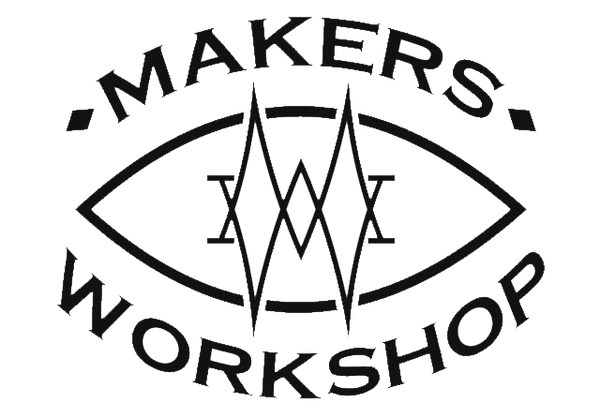Paper snowflakes into lanterns? Why not?
To get started, I tore regular printer paper down to the rough proportions I wanted for the finished lanterns. I folded them up and started cutting; Nothing more too it than that, just like making regular paper snowflakes. I ended up making a few as I got a better feel for what I liked and didn’t like design wise.
I put down some black construction paper and used Adobe Capture to convert the paper designs into vector files. This process works best with a high contrast background, hence the black construction paper. After scanning a few of my favorites, I brought them into adobe illustrator to be refined.
I use the Box-o-Matic app all the time for creating box joints. It’s a favorite because it’s so easy. T auto-generated a template for a box the size of my finished lanterns for a ⅛ inch piece of wood. Then, I replaced the outer border of the snowflake scans with the file that the box-o-matic app generated.
I initially went in with a thin sheet of poplar to cut this out of because I had a lot of it kicking around.
I put the raw material into the laser cutter and let the first design run. It was the smallest of the designs I had put together so it seemed like the right choice for my first proof-of-concept.
After dry fitting this together, I prepped for the resin pour. Acrylic doesn’t adhere to resin, so I cut some scraps down to the size of each lantern side. I clamped the poplar down to it with a few clamps per piece. The pressure will keep the resin from seeping between cells and marbling colors.
I used Total Boat 2:1 with Medium Hardener and mixed a few different mica powders into a few different small batches so I could carefully pour each color separately into the patterns.
After the resin hardened I was able to easily remove the acrylic panels and then send each side through the drum sander to get rid of the bulk of the excess resin. I followed up with a light hand sand. Again, I was thinking of this first one as more of a proof of concept so i really didn’t get too picky here. I then slipped the pieces together and finished it with a wipe on poly.
I prepped some more acrylic to fit the next lantern design. I found the hard way that poplar was extremely brittle, and my hope was that the resin would look cool and add some much needed rigidity. Because of this, I also went pretty heavy handed on the resin pour.
I didn’t like a lot about this first proof-of-concept. The poplar was extremely brittle to work with, and I didn’t care for the look of it with the resin either; the different colors of resin in each cell were a bit distracting and overall “too much” for what I was envisioning. I settled out on going with a three-sides lantern design, with just clear resin in every cell. I thought that the finished look would be much more sophisticated. Additionally I made my box joints longer than needed. They wouldn’t be sitting flush anyway, due to the new triangular shape, so I figured I’d overexaggerate them for an interesting look.
I went forward with the design changes on purpleheart, mahogany, and in the name of not giving up: poplar.
Once the resin hardened in each of these I sanded them down using just the random orbital sander this time. The drum sander ate up more material than I would have liked on the first lantern, and I wanted some more control. I sanded all of these up to a 220 grit.
As expected the purpleheart and mahogany handled the process much more smoothly. However, I did run into a little hiccup at this phase… I dropped one of the purpleheart pieces and snapped off a few of the box joints. This was my fault, not the wood’s fault. Instead of trying to pierce things back together I ended up cutting the box joints off of the purple heart pieces on the band saw. It worked out nicely though! I kind of liked it better on the purple lantern anyway and liked how it added variation to the designs in the set.
This piece will not be facing a huge amount of wear and tear, so I just sanded a slight bevel on the edges to help it go together into the triangular shape. You can take more time with this step if you desire.
To glue all of these into place I slid the together and added a drop of wood glue to each corner. It isn’t a tremendously strong joint. However, I don’t anticipate these seeing any wear and test so I think it will be perfect and avoid the risk of smudging the wood glue onto any of the resin spots from trying to squeeze my hand into these.
Once the glue dried I used mineral oil as a finish. It was really convenient thanks to my giant bucket of the stuff; dipping is a much easier way to finish something with a lot of nooks and crannies like these. One downside is that mineral oil doesn’t harden like other finishes. In the future I may want to refinish these. However, that’s easy enough to do. It just takes a re-dip.
When all was said and done these lanterns looked really amazing with candle light. It was a bit of a rabbit hole of a project and I think this same overall concept could go in many different directions.
